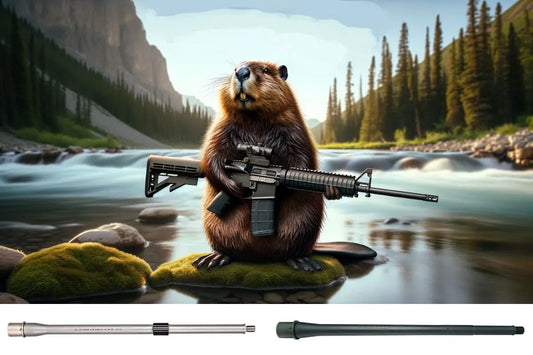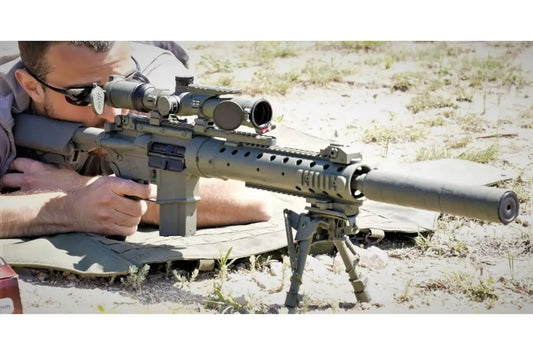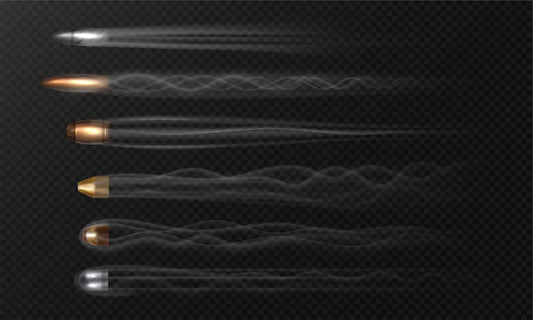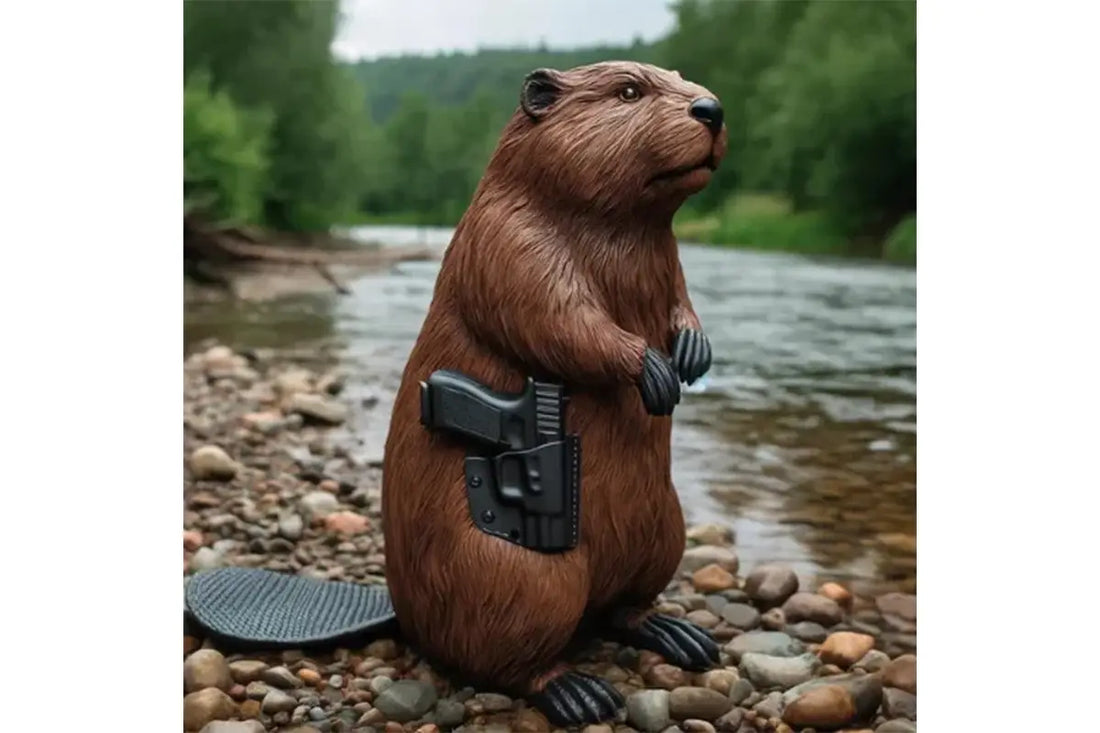
Concealed Carry Confidence: Your Ultimate Guide to Choosing the Perfect Handgun
When it comes to personal protection, selecting the right concealed carry gun is one of the most significant decisions you can make. With countless firearms on the market, each offering unique advantages in size, caliber, capacity, and reliability, the process can feel overwhelming. However, choosing a concealed carry firearm doesn’t need to be a daunting task. By focusing on core factors—power, portability, and precision—you can arrive at a model that delivers optimal performance and peace of mind.
In this comprehensive guide, we’ll explore the critical considerations you should weigh when purchasing a concealed carry gun, highlight popular firearm models that excel in each category, and include insights from industry experts. By the end of this article, you’ll not only have a solid grasp of different firearm options but also be equipped to make an informed choice that suits your lifestyle.
1. The Importance of “Balance” in a Concealed Carry Gun
Balancing power, portability, and precision is key. A concealed carry firearm might sit on your hip for hours a day, only to be used in a high-stress scenario when every second (and every round) counts. According to longtime firearms instructor Rob Pincus, “The ideal carry gun should fit into your lifestyle so seamlessly that you don’t even notice it—until the moment you need it.”
1.1 Power (Caliber and Ballistics)
The caliber of your firearm determines its stopping power. Common self-defense calibers include .380 ACP, 9mm, .40 S&W, and .45 ACP. Each has its fans:
- .380 ACP: Known for its relatively light recoil and smaller cartridge size, .380 ACP can be ideal for ultra-compact handguns. Critics, however, argue that it offers less stopping power than 9mm.
- 9mm: Arguably the most popular self-defense round. Modern hollow-point ammunition has improved the stopping capability of 9mm rounds significantly, making them the go-to choice for many professionals and enthusiasts.
- .40 S&W: Balances power and capacity but typically produces more felt recoil than 9mm. Some carry advocates appreciate its extra “oomph,” while others find the recoil too harsh.
- .45 ACP: Highly respected for its larger diameter bullet and potential stopping power. That said, handguns chambered in .45 ACP often have lower capacities and can be bulkier.
1.2 Portability (Size and Weight)
For daily concealed carry, the gun’s size and weight matter almost as much as its performance. A lightweight, slim handgun is easier to conceal and more comfortable to carry during everyday routines. According to Massad Ayoob, renowned firearms instructor and author, “If it’s too big to carry comfortably all day, it’s probably not the right gun for you.”
- Full-Size Pistols (e.g., Glock 17, SIG Sauer P226): Larger frame, longer sight radius, and higher capacity. However, concealing a full-size pistol can be challenging, especially for individuals with smaller body frames or lighter clothing.
- Compact Pistols (e.g., Glock 19, Smith & Wesson M&P9 Compact): Offer a middle ground between concealability and capacity. Often chosen for their versatility, balancing good round count with reduced overall dimensions.
- Subcompact/Micro Pistols (e.g., Glock 43, Ruger LCP, SIG Sauer P365): Specifically designed for deep concealment. Typically feature lower capacity but are extremely easy to tuck away under light clothing.
1.3 Precision (Accuracy and Ergonomics)
Accuracy hinges on the shooter’s skill, the firearm’s ergonomics, and how well the two work together. Good ergonomics ensure you have a firm, comfortable grip and an intuitive sight picture. This is why Tom Gresham, host of “Gun Talk,” emphasizes, “Comfort and proficiency go hand-in-hand. The more comfortable the grip and controls, the more confident you’ll be in a defensive situation.”
2. Top 10 Concealed Carry Guns for 2025
While there are dozens of great options on the market, here’s a curated list of ten popular concealed carry handguns. Each offers a unique mix of power, portability, and precision.
2.1 Glock 19 (9mm)
- Why It Stands Out: Often hailed as the “Goldilocks” gun—big enough to shoot comfortably, small enough to conceal (for many body types). With a standard capacity of 15+1 rounds and Glock’s trademark reliability, it remains a top choice.
- Key Features:
- Safe Action trigger system
- Polymer frame for reduced weight
- Easy to find aftermarket parts and holsters
“The Glock 19 has been a go-to recommendation for years because of its proven track record and manageable size,” says James Yeager, firearms trainer and founder of Tactical Response.
2.2 SIG Sauer P365 (9mm)
- Why It Stands Out: The P365 revolutionized the micro-compact market by offering a 10+1 capacity in a remarkably small frame. Variants like the P365 XL add a longer slide and increased capacity.
- Key Features:
- Slim profile ideal for inside-the-waistband carry
- Excellent night sights from the factory (often X-RAY3)
- Comfortable grip texturing
“SIG basically redefined what a small 9mm could be with the P365 line,” remarks Larry Vickers, retired U.S. Army 1st SFOD-Delta combat veteran.
2.3 Smith & Wesson M&P Shield Plus (9mm)
- Why It Stands Out: Building on the popularity of the original Shield, the Shield Plus offers an increased 10+1 or 13+1 capacity in a streamlined package.
- Key Features:
- Excellent grip angle and texture
- Crisp trigger in the updated Shield Plus model
- Slim, single-stack-ish profile for comfortable IWB carry
“The Shield was already an excellent single-stack option. The Plus upgrade makes it an even stronger contender for concealed carry,” says Michael Seeklander, firearm instructor and competitive shooter.
2.4 Ruger LCP II (.380 ACP)
- Why It Stands Out: Ultra-lightweight and compact, the Ruger LCP II is one of the smallest .380 ACP pistols on the market, popular as a pocket or backup gun.
- Key Features:
- Improved trigger over the original LCP
- Easy-to-rack slide design
- Very light and slender, making it ideal for pocket carry
“Sometimes you need something that disappears in any attire, and the LCP II does just that,” notes Rob Pincus.
2.5 Springfield Armory Hellcat (9mm)
- Why It Stands Out: Direct competitor to the SIG P365, the Hellcat has a 11+1 or 13+1 capacity with a similar micro-compact form factor.
- Key Features:
- Adaptive grip texture that provides a secure hold
- High-visibility sights, often featuring a U-Dot system
- Optional optic-ready slide versions
“Hellcat is proof that big performance can come in small packages. Springfield’s design innovations make it a serious contender for EDC,” comments Massad Ayoob.
2.6 Glock 43X (9mm)
- Why It Stands Out: Combining the slimness of the Glock 43 with an extended grip and 10+1 capacity, the G43X offers better controllability than many other micro-9mms.
- Key Features:
- Slimline design
- Longer grip than the original G43 for a full-hand purchase
- Accessory rail (on some MOS models)
“Glock listened to the market by extending the grip but keeping the slide short and slim. The G43X hits a sweet spot for many carriers,” says Tom Gresham.
2.7 Walther PPS M2 (9mm)
- Why It Stands Out: Known for its ergonomics and smooth trigger pull, the PPS M2 is a refined single-stack 9mm built with concealed carry in mind.
- Key Features:
- Ergonomic grip with non-abrasive texturing
- Short, distinct trigger reset
- 6-, 7-, or 8-round magazine options for customizable grip length
“Walther’s PPS M2 is underrated. The trigger feels more like a competition trigger than something you’d expect on a small carry gun,” observes James Yeager.
2.8 Kimber Micro 9 (9mm)
- Why It Stands Out: For shooters who favor the 1911 style but want a compact 9mm, the Kimber Micro 9 offers a metal frame, crisp single-action trigger, and classic 1911 ergonomics.
- Key Features:
- 1911-style controls
- Premium fit and finish (especially on higher-end variants)
- Compact, yet relatively comfortable to shoot
“If you appreciate classic 1911 ergonomics in a carry-friendly size, the Micro 9 is a top-notch choice,” says Larry Vickers.
2.9 Kahr PM9 (9mm)
- Why It Stands Out: One of the pioneers in the slim, single-stack 9mm category, the Kahr PM9 remains a favorite for its straightforward, snag-free design and smooth double-action trigger.
- Key Features:
- Extremely compact and lightweight
- DAO trigger that’s consistent with each shot
- Simple, minimalistic controls for ease of use
“Though it’s been around for a while, the PM9 was ahead of its time—and it’s still a top-tier concealed carry option,” explains Michael Seeklander.
2.10 Smith & Wesson J-Frame Revolver (.38 Special/.357 Magnum)
- Why It Stands Out: Revolvers, like the S&W 642 or 638, remain a go-to choice for some carriers who value simplicity and reliability above all else.
- Key Features:
- Minimal controls and fewer points of failure
- Shrouded or internal hammer designs for snag-free pocket carry
- Can be chambered in .38 Special +P or .357 Magnum
“There’s a reason revolvers have stood the test of time. For those who want a straightforward, reliable setup, the J-Frame is still hard to beat,” asserts Rob Pincus.
3. Key Factors to Consider Before You Buy
Selecting the “perfect” gun from any list should involve more than just brand recognition. The following elements will help you narrow down which model is right for you.
3.1 Purpose and Environment
- Daily Carry vs. Occasional Carry: If you plan to carry your firearm daily, comfort and concealability become paramount. If it’s more for home defense or occasional concealed carry, you might favor a larger firearm.
- Urban vs. Rural Setting: Urban dwellers might prefer higher capacity, while rural settings could place more emphasis on caliber versatility (e.g., .357 Magnum for possible defense against animals).
3.2 Caliber Preference and Ammunition Availability
- Ammunition Costs: 9mm rounds are usually more cost-effective, encouraging regular practice. If .45 ACP or .357 Magnum is your preference, be prepared for higher ammunition prices.
- Ballistic Performance: Modern hollow-point technology has narrowed the gap between calibers, but personal preference, recoil tolerance, and ballistic performance remain significant factors.
3.3 Ergonomics and Fit
- Grip Size and Shape: A well-fitting grip enhances accuracy and recoil management. Try holding several models at a gun store or range to see what feels most natural.
- Trigger Reach and Pull: Trigger distance matters if you have smaller hands. Ensure you can operate the trigger comfortably without shifting your grip.
- Sights and Sight Radius: Some firearms come with excellent factory sights. Others may require upgrading. A longer sight radius (common in bigger guns) aids accuracy, but smaller guns can benefit from high-visibility or night sights.
3.4 Weight, Materials, and Durability
- Polymer vs. Metal: Polymer-framed guns are lighter and resist corrosion, but many shooters prefer the heft and perceived recoil dampening of metal frames (steel or aluminum).
- Slide Serrations and Controls: Check for well-designed slide serrations, especially if you have a weaker grip. Controls like the magazine release, slide stop, and external safety (if applicable) should be easy to manipulate.
3.5 Reliability and Manufacturer Reputation
- Track Record: Glocks, SIGs, and Smith & Wesson M&Ps are widely considered reliable due to extensive testing and service use. Newer models often rely on the brand’s established reputation.
- User Reviews and Testing: Before you buy, explore online forums and watch trusted reviewers. Range rentals are also invaluable for hands-on comparison.
3.6 Holster Compatibility and Concealment Method
- Inside-the-Waistband (IWB): Most popular for concealed carry. Ensure your chosen firearm has multiple holster options to find a comfortable and secure fit.
- Outside-the-Waistband (OWB): Great for open carry or when you can wear a covering garment. Typically more comfortable but less concealable.
- Pocket Carry: Only feasible with smaller firearms. Always use a pocket holster to keep the trigger protected.
- Appendix Carry: Offers quick access and good concealment but not everyone finds it comfortable.
As Massad Ayoob advises, “Your holster should be an extension of your firearm. If it doesn’t fit the gun or your body type, look for something else.”
4. Accessorizing Your Concealed Carry Gun
Beyond just the firearm, a few accessories can dramatically improve your concealed carry experience.
4.1 Holsters and Belts
- Holster Features: Look for adjustable retention, sweat guards, and smooth edges. Kydex holsters offer secure retention and easy re-holstering. Leather options can be more comfortable against the skin.
- Belts: A sturdy gun belt keeps the holster from sagging or moving around. Look for belts specifically designed for concealed carry, often reinforced with polymer or kydex inserts.
4.2 Sights and Optics
- Night Sights: Tritium or fiber optic sights improve low-light visibility.
- Red Dot Sights (RDS): Increasingly common on carry guns, red dots can speed up target acquisition. Look for micro red dots like the Shield RMSc or Holosun 507K that fit compact slides.
4.3 Lights and Lasers
- Weapon-Mounted Lights (WMLs): Useful for identifying threats in low-light situations. However, they add bulk. Some micro-compact pistols now have accessory rails or are designed for small WMLs.
- Laser Sights: Can aid in rapid target acquisition, but they’re no substitute for proper sight alignment and trigger control.
4.4 Extended or Alternative Magazines
- Extended Magazines: Might offer additional rounds but can affect concealability.
- Grip Extensions: Allow for a better purchase on the firearm without adding significantly to the gun’s height. Often found for subcompact models.
5. Practical Tips for Concealed Carry Success
5.1 Train, Train, Train
Owning a firearm for self-defense without adequate training is a disservice to you and those around you. Seek professional instruction from certified firearms trainers.
“The more you sweat in training, the less you bleed in battle,” says Rob Pincus.
5.2 Dry Fire Practice
Consistent dry fire practice hones your trigger control, draw stroke, and sight alignment without burning through live ammunition. Ensure the gun is completely unloaded and follow safety protocols every time you dry fire.
5.3 Regular Live Fire Practice
Set a schedule for range visits. Familiarity with your firearm’s recoil impulse and muzzle flip builds muscle memory. Practice from realistic defensive distances, typically ranging from 3 to 15 yards.
5.4 Situational Awareness
A concealed carry permit doesn’t make you invincible. Stay vigilant in public places, scanning your surroundings, and be prepared to de-escalate potential conflicts.
5.5 Understand Local Laws
Firearm regulations vary widely by state and even local jurisdictions. Research your area’s concealed carry requirements and keep abreast of any changes. Ignorance of the law can result in legal trouble or worse.
Massad Ayoob warns, “Carrying legally is just as important as carrying effectively. A single oversight can lead to serious legal consequences.”
5.6 Maintenance and Reliability Checks
Any mechanical device can fail, and guns are no exception. Perform routine cleanings and lubrication. Periodically test your carry ammunition to ensure reliability. Rotate your carry ammo if it’s subjected to temperature and humidity changes.
6. Analyzing Your Carry Profile
No two carriers are exactly alike. Before you commit to a firearm, consider your personal profile:
- Body Type: Slimmer individuals may find subcompact pistols easier to hide. Heavier-set carriers might conceal a compact or even a full-size gun more easily.
- Wardrobe Choices: Suits, casual attire, and gym clothes can each pose different concealment challenges. If you wear tighter-fitting garments, micro or single-stack pistols can be more practical.
- Lifestyle and Occupation: An office worker might prefer an IWB or ankle carry method, while someone who works outdoors might carry OWB under heavier clothing.
7. Making the Final Decision
We’ve covered a variety of factors—caliber, size, weight, ergonomics, accessory options, and brand reputation—that all play into selecting the right concealed carry firearm. The best approach often involves trying multiple guns at a shooting range. Hands-on experience is invaluable for discerning differences in recoil, trigger pull, and grip ergonomics.
Remember that no single “best” concealed carry pistol exists. Instead, there’s a “best for you” firearm that aligns with your unique circumstances. As you weigh your decision, keep these four cornerstones at the forefront:
- Comfort: If you’re not comfortable carrying the gun daily, you won’t carry it consistently.
- Confidence: You need to trust the firearm’s reliability and your ability to shoot it effectively.
- Concealment: The gun must fit your chosen method of carry without printing or shifting excessively.
- Competence: Continue training, practicing, and staying informed about new developments in the firearms industry.
8. Summary: Top Picks at a Glance
- Best Overall Balance: Glock 19
- Most Innovative Micro-Compact: SIG Sauer P365/ Hellcat (tie)
- Budget-Friendly Deep Concealment: Ruger LCP II
- Best for 1911 Fans: Kimber Micro 9
- Revolver Enthusiast’s Choice: Smith & Wesson J-Frame
Choosing the perfect concealed carry gun is a process of discovery. Some might settle on a single pistol for life, while others build a small collection. Whatever path you take, keep safety, legal compliance, and responsible ownership at the forefront.
9. Next Steps: Moving Toward Responsible Carry
A firearm can be a powerful equalizer, but it carries immense responsibility. Beyond simply choosing the right model, staying abreast of local and federal laws, consistently training, and maintaining situational awareness should all be part of your concealed carry journey.
As Tom Gresham reminds us, “Owning a handgun for self-defense is more than a right—it’s a responsibility that requires diligence, training, and awareness.”
- Obtain Your Permit/License: Ensure you follow state-specific guidelines, complete any required training, and maintain a valid permit.
- Join a Community: Consider joining a local gun club or an online forum focused on concealed carry. The exchange of knowledge can be invaluable, especially when you have questions or need recommendations.
- Practice Defensive Scenarios: Regular target practice is only part of the equation. If possible, attend defensive handgun courses that teach movement, cover, and situational decision-making.
- Maintain a Defensive Mindset: Carrying a gun is not about seeking conflict. It’s about having a last-resort tool to protect yourself or others in a life-threatening situation.
10. Where to Find Your Concealed Carry Gun
When you’ve finally decided on a handgun, the next step is purchasing it from a reputable source. This might be a local gun store where you can handle the firearm one last time before buying, or a trusted online retailer. Always ensure you follow proper transfer procedures through a Federal Firearms License (FFL) holder in your state.
“Relying on trustworthy vendors for your firearms and accessories ensures you get authentic products and reliable customer service,” states Michael Seeklander.
11. Conclusion
Finding the perfect concealed carry gun hinges on discovering your personal balance of power, portability, and precision. Whether you gravitate toward a micro-compact 9mm like the SIG P365, a tried-and-true Glock 19, a comfortable single-stack M&P Shield Plus, or even a classic Smith & Wesson J-Frame, the main question should be: Does this firearm meet my specific needs and preferences?
Remember, choosing a firearm is just the beginning. Stay informed, continue practicing, and approach concealed carry with the gravity and respect it deserves. After all, you’re investing in more than just a piece of hardware—you’re investing in peace of mind and personal security.
Visit Brownells.com to find these concealed carry guns and accessories.
